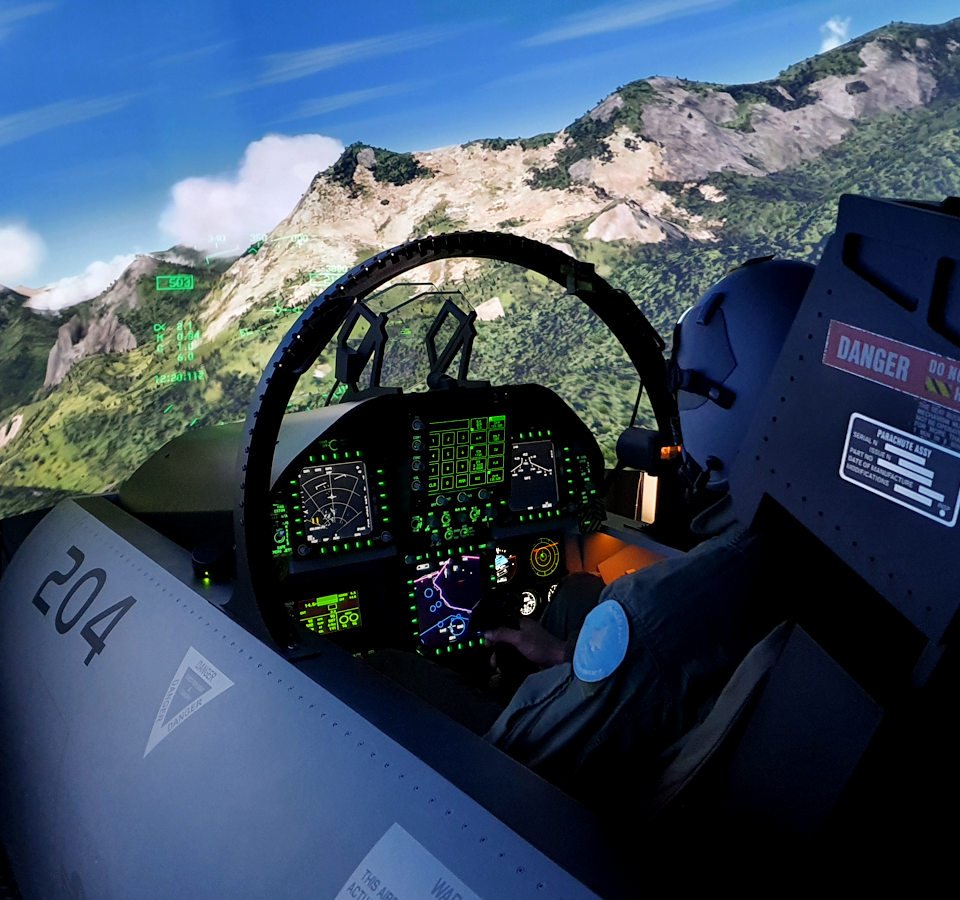Professional military flight simulators, also known as military flight training devices (FTDs) or simulators, differ from commercial flight simulators in several ways:
- Purpose: Military flight simulators are primarily used for training military pilots and aircrews for specific military aircraft and operations. They are designed to replicate the unique characteristics, systems, and mission capabilities of military aircraft, including combat scenarios, tactical maneuvers, and weapon systems. Commercial flight simulators, on the other hand, focus on training pilots for commercial airliners and are designed to simulate civil aviation operations.
- Realism and Fidelity: Military flight simulators often strive for a high level of realism to accurately represent the military aircraft’s performance, systems, and operational environment. They may incorporate advanced features like realistic weapon systems, radar simulation, electronic warfare simulation, and sensor integration. Military simulators are typically built to closely match the specific military aircraft’s cockpit layout, controls, and instrumentation. Commercial flight simulators prioritize the fidelity of commercial airliners, including their cockpit layout, flight dynamics, and systems, with a focus on replicating real-world airliner operations.
- Scenarios and Missions: Military flight simulators simulate a wide range of military operations, including air combat, air-to-ground attacks, close air support, reconnaissance missions, and aerial refueling. They often feature mission planning, tactical decision-making, and coordination among multiple aircraft or platforms. Commercial flight simulators primarily focus on civilian flight operations, such as takeoffs, landings, navigation, air traffic control procedures, and emergency scenarios relevant to commercial aviation.
- Security and Classification: Military flight simulators are subject to stringent security requirements and may incorporate classified or sensitive information related to military systems, tactics, or operations. They are designed to protect sensitive data and ensure that only authorized personnel have access to the simulator and its data. Commercial flight simulators do not have the same security considerations since they primarily simulate public knowledge and publicly available aircraft and systems.
- Training Objectives: Military flight simulators are used to train military pilots and aircrews to perform specific military tasks, such as combat maneuvers, tactical decision-making, and mission planning. They focus on training military personnel to operate effectively in complex and dynamic military environments. Commercial flight simulators primarily aim to train pilots for safe and efficient operation of commercial aircraft, including normal and emergency procedures, instrument flying, and crew coordination.
It’s worth noting that some elements, such as flight dynamics, navigation systems, and general aviation principles, may overlap between military and commercial flight simulators. However, the key differences lie in the specific aircraft models, mission profiles, training objectives, and operational environments that each type of simulator aims to replicate.

